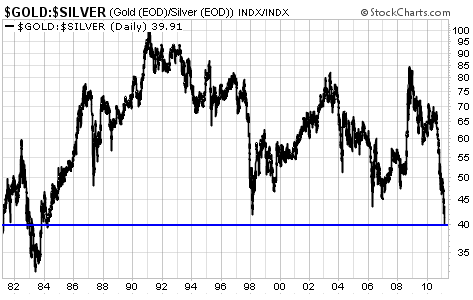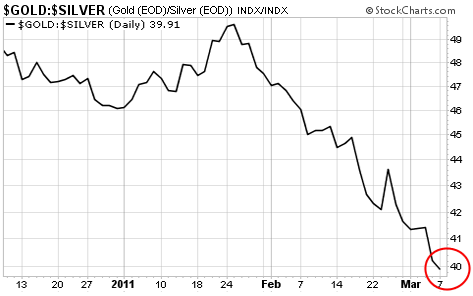Saturday, March 12, 2011
CrossTalk: Arab Awakening
Japan earthquake: nuclear disaster feared after power plant 'explosion'
Japan is battling to avoid a nuclear disaster after an explosion at a power plant in the aftermath of the country’s biggest earthquake and devastating tsunami.
A huge blast has caused further damage at one of two nuclear power plants which the Japanese government had placed under a state of emergency, compounding fears of a nuclear meltdown.
Silver Patches to treat Paper addicts?
 Whilst these silver bandages won't cure long term paper addictions such as to: fiat currencies, share certificates, bonds, CDOs & CDS they could be used as an interesting talking point about the merits of silver investing.
Whilst these silver bandages won't cure long term paper addictions such as to: fiat currencies, share certificates, bonds, CDOs & CDS they could be used as an interesting talking point about the merits of silver investing.Silver has a multitude of industrial uses, many of which ensure the silver can never be economically recovered.
"gold is hoarded, but silver is destroyed"....Tears of the Moon 2010.
Note: these bandages can be used to treat paper cuts :-)
The Most Important Silver News in Nearly 30 Years
 By Chris Weber, editor, The Weber Global Opportunities Report
By Chris Weber, editor, The Weber Global Opportunities Report Wednesday, March 9, 2011

During the grinding bear market of the 1990s, when both metals fell off of investors' radar screens, the gold/silver ratio plunged from 100 to just over 40 to one in just a few years. Several times, the ratio has visited this area. Each time, gold immediately proceeded to become relatively stronger. Silver's relative strength was not enough to move it further down... until now.

Over the last six months, you see how the gold-to-silver ratio has been moving lower. Silver has been relentlessly moving up faster than gold. Back in early September of last year – just six months ago – the ratio was over 60 to one. Now, as I write, it has broken 40.
Chris Weber
Saudi Arabia police 'fire at rally'
 |
| So far the demonstrations have been small and concentrated but activists are urging a "Day of Rage" [Reuters] |
Police have reportedly opened fire at a rally in Saudi Arabia in an apparent effort to stop planned protests there, AP news agency has reported.
A witness in the eastern city of Qatif told AP that gunfire and stun grenades were fired at several hundred protesters marching in the city streets on Thursday.
The witness, speaking on condition of anonymity because he feared government reprisal, said police in the area opened fire. The witness saw at least one protester injured.
Government officials have warned they will take strong action if activists take to the streets after increasing calls for large protests around the country to press for democratic reforms.....read on
Inflation in China Keeps Climbing
Jim Sinclair on gold, US$ and violence in the street

Jim Sinclair discusses the gold market, the inherent weakness in the US$ and of riots coming to the USA with Eric King of King World News.......listen here
China, North Africa, Greece and gold - Julian Philips

Julian Philips of goldforcaster.com discusses the gold & oil market with Geoff Candy of mineweb.co.za. listen here
Should We Be Alarmed That The Biggest Bond Fund In The World Has Dumped All Of Their U.S. Treasury Bonds?
 From economiccollapseblog.com
From economiccollapseblog.comBill Gross, the manager of the biggest bond fund in the world, has forgotten more about bonds than most of us will ever learn. That is why the big move that PIMCO has just made is so unsettling. At one time PIMCO held more U.S. government debt than any other bond fund on the globe, but now news has come out that they have gotten rid of all their U.S. government-related securities. So should we be alarmed? For months Gross has been warning that the bull market in bonds is coming to an end, and now it looks like he is putting his words into actions. Gross has often publicly decried the rampant government spending that has been going on over the last several years, and apparently he has seen enough. He is taking his ball and he is going home. This really is a stunning move by PIMCO. Gross must really believe that something fundamental has shifted. Gross didn't get to where he is today by being stupid. But so far world financial markets are taking this news in stride. Nobody seems all that alarmed that the largest bond fund in the world has dumped all of their U.S. Treasuries. But with world financial markets in such a state of chaos right now, shouldn't we all take note when one of the biggest players in the game makes such a bold move?
Gross believes that interest rates on U.S. Treasuries are way too low right now and that they will start going up when the Federal Reserve ends the current round of quantitative easing in June. Gross has indicated that if interest rates on U.S. Treasuries go up high enough, PIMCO might get back in.
But if interest rates do start going up that is going to make servicing the monolithic U.S. national debt much more expensive, and that would not be good news for U.S. government finances.
But would the Federal Reserve really allow interest rates on U.S. Treasuries to go up substantially? Wouldn't they just step in at some point and start buying U.S. government debt again?
Probably.
But the truth is that the Ponzi Scheme of the U.S. Treasury issuing bonds and the Federal Reserve buying them up cannot last forever as Gross noted in his March newsletter....
"Basically, the recent game plan is as simple as the Ohio State Buckeyes' "three yards and a cloud of dust" in the 1960s. When applied to the Treasury market it translates to this: The Treasury issues bonds and the Fed buys them. What could be simpler, and who's to worry? This Sammy Scheme as I've described it in recent Outlooks is as foolproof as Ponzi and Madoff until... until... well, until it isn't."
Gross also noted in his newsletter that the Federal Reserve is currently buying up about 70 percent of all new U.S. government debt.
So what is going to happen when that stops?
Nobody knows for certain, but it sure is going to be interesting to watch.
The market for U.S. Treasuries has not been working "normally" for quite some time now, and there is some legitimate doubt as to whether it will ever fully get back to "normal" again.
Meanwhile, the sovereign debt crisis in Europe continues to get even worse.
The yield on 10-year Portuguese bonds is now above 7 percent, the yield on 10-year Irish bonds is now above 9 percent and the yield on 10-year Greek bonds is now above 12 percent.
Most people expect European leaders to soon come to an agreement to add billions more to existing bailout funds, but there is no guarantee that is actually going to happen.
In fact, the Germans are making waves by insisting that the financially troubled nations in the EU must be willing to agree to limits on their future budget deficits. A recent article on CNBC described the situation this way....
Before the Germans will agree to pump in extra cash from their taxpayers, backed by the French, they want each leader to agree to legislation at home that will limit the size of their future national deficits. The Greeks are already refusing point blank. Things may boil to the surface at an extraordinary summit on Friday.
So what if an agreement can't be reached?
Could the dominoes in Europe start to fall?
Very few people actually want to see a wave of sovereign defaults in Europe, but the current situation cannot go on forever. At some point the Germans are going to get sick and tired of bailing out other members of the EU.
The global addiction to debt is about to start having some very serious consequences.
For decades, most of the governments of the industrialized world have been running up debt as if it would never come back to haunt them. Now the world is absolutely covered in red ink and everyone is looking for a way to solve the problem.
But there is not going to be a debt jubilee to come along and save everyone. This debt bubble is either going to keep expanding or it is going to burst.
At one point, at least some of the debt-ridden nations will try to inflate their way out of debt by recklessly printing money. To a certain extent that has already been going on. But it will not work. It will only cause a whole lot of inflation.
This is just more evidence that any economic system based on debt is destined to fall. When we allowed a private central bank to start issuing debt-based currency in this country back in 1913 we set ourselves up to fail. As I have written about previously, the Federal Reserve should never have been allowed to come into existence, and it should have been shut down by Congress long before now.
But now the United States is caught in the same debt trap that most of the other nations around the world are caught in. The global addiction to debt is going to have some very, very serious consequences. Instead of moving into a great time of peace and prosperity, everything is about to come falling apart.
Things could have been different. Things did not have to turn out this way. But here we are on the edge of one of the biggest financial disasters in human history and most Americans still don't understand what is happening.
